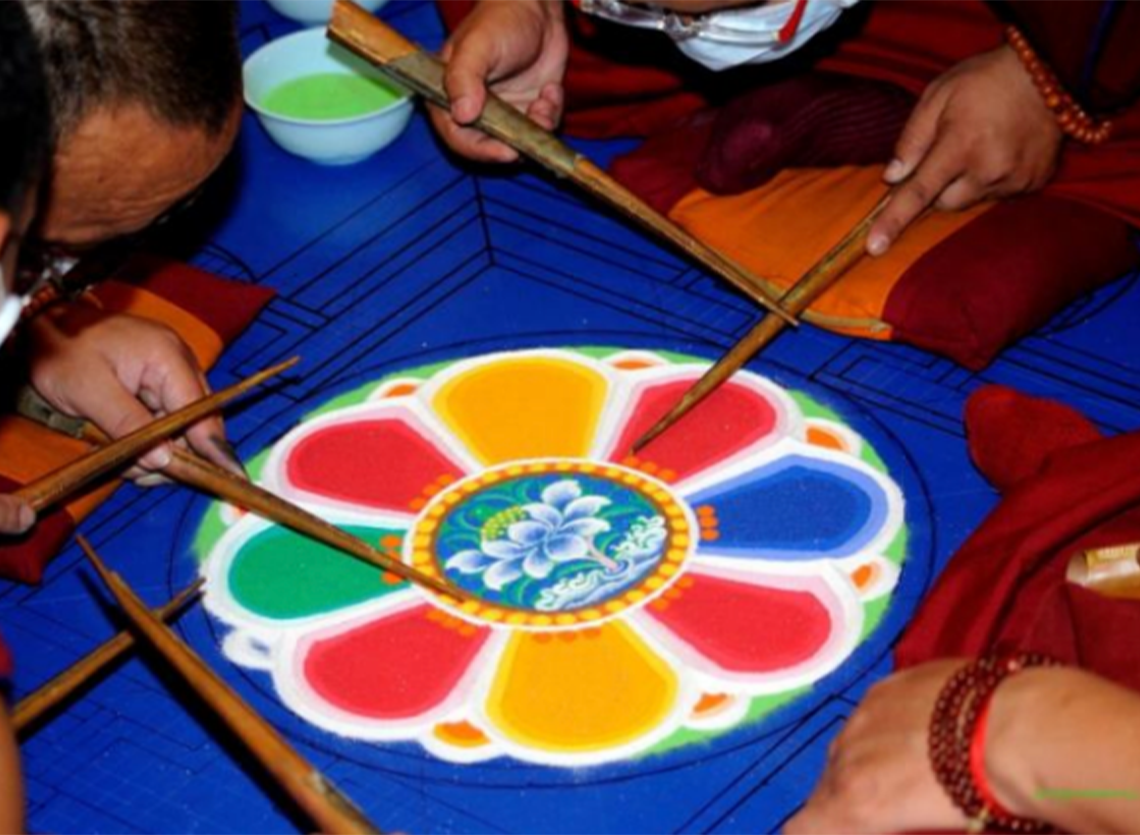Drepung Gomang Sacred Arts Tour
Tuesday, October 10 | 3:00 – 5:00pm
Drop-in | Free and open to all!
Join us in welcoming the Drepung Gomang Sacred Arts Tour for a free and open to all sand painting workshop. Learn about the culture and how to create the following designs using the same techniques as the monks use in creating a Sacred Sand Mandala:
• Eight Auspicious Symbols (Tashi Dargye)
• Yaks
• Windhorses
• Snow lions
• Stylized fire patterns
Sand painting is an ancient Tibetan art form. The Sacred Sand Mandala is carefully constructed from dyed sand particles to represent the particular esoteric, textual traditions of Buddhism. It is a transient art form, thought to have originated in India and been transferred in the middle ages to Tibet. The sand mandala is constructed as vehicle to generate compassion, realize the impermanence of reality, and a social/cosmic healing of the environment. Millions of grains of colored sand are painstakingly laid into place on a flat platform over a period of several days, forming an intricate diagram of the enlightened mind and the ideal world. The most common substance used in the creation of dul-tson-kyil-khor is colored sand, which is ground from stone. Other popular substances are powdered flowers, herbs or grains. In ancient times, powdered precious and semi-precious gems were also used. Thus, lapis lazuli would be used for the blues, rubies for the reds, and so forth. When finished, to symbolize the impermanence of all that exists, the colored sands are swept up and poured into a nearby river or stream where the waters carry the healing energies throughout the world.
Donations will be accepted to benefit the 2000 Tibetan Buddhist monks of the Drepung Gomang Monastery
About the instructors
Drepung Gomang Monastic University is one of the most reputed centers (the three great seats: Drepung, Gaden and Sera) for learning, contemplating and practicing Tibetan Buddhist thoughts and science notably known as the second Nalanda University in Tibet. As prophesied in Langsheg Sutra by Lord Buddha: When once Nagaraja Madhopa pledged Lord Buddha with a white conch, Lord Buddha handed it over to Maugalayana, one of his two closest attendants who possessed transcendental miracle-power, with blessed and instructive decree to take it to Gogpa Ri (Garlic Hill) at Gaden in Tibet and hide it there in the hill. It adds that in the future the Bhiksu of Lotus-purity in nature would unearth it and it would thereafter be used as Tsogdhung, to be blown as the signaling medium for gathering to spiritual congregation……
Photography Policy: By participating in ArtLab programming, I understand my child or myself may be photographed by CMCA staff for general documentation and publicity. I also understand that no royalty, fee or other compensation shall become payable to me by reason of such use.
Header image courtesy of Drepung Gomang Monastery

